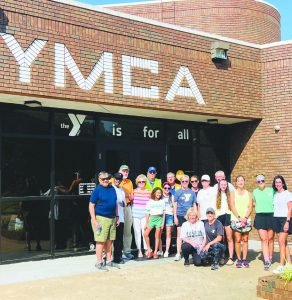Darwinian evolution says that complex systems arise through numerous successive, slight modifications that benefit the species’ survival over many generations. However, we have shown that bacterial flagellum is a highly complex system that could not have been the product of numerous slight modifications over a long period of time because the flagellum system is a completely packaged unit. It shows design and complexity, two things that evolution cannot explain.
Darwinian evolution says that complex systems arise through numerous successive, slight modifications that benefit the species’ survival over many generations. However, we have shown that bacterial flagellum is a highly complex system that could not have been the product of numerous slight modifications over a long period of time because the flagellum system is a completely packaged unit. It shows design and complexity, two things that evolution cannot explain.
The bacterial flagellum is not an isolated case. There are thousands of irreducibly complex systems throughout the biological world. Cilium - hair-like structures in our throats that move mucus up and out is another example. Within the blood clotting cascade are a dozen clotting factors, dozens of proteins and dozens of steps in blood clot formation.
The same irreducible complexity appears in living creatures’ adaptive immune response systems. Not to mention DNA replication, the Golden Ratio and the human eye, among many more.
The human eye is one of the most complex systems in human anatomy. Darwin gave it much attention, and even though he recognized its complexity, he still maintained that a complex eye could evolve from simple random mutations that create some primordial light-sensitive cells - and then evolving from there. Even in Darwin’s time, in the mid-nineteenth century, science knew much about the anatomy of the eye. Scientists also knew that if any one of the eye’s many integrated features were damaged or missing, severe loss of sight or blindness would be the result. They knew that the eye could function only if nearly wholly intact. Once again, Darwin argued that the eye could only develop through a slow, incremental process over many generations. However, gradual development is impossible due to the many interdependent, sophisticated features that could not have evolved step by step. Today, however, so much more is understood about the complexity of the eye that random evolution is not the best explanation of how we ended up with the irreducibly complex eyes that we have.
Thanks to the work of biochemists since Darwin’s day, sight at the biochemical level is vastly more complex than Darwin could have ever imagined. Biochemist Michael Behe describes the complex chemical reactions that are necessary for one cycle of sight in this way: “When light first strikes the retina, a photon interacts with a molecule called 11-cis-retinal, which rearranges within picoseconds to trans-retinal. (A picosecond is about the time it takes light to travel the breadth of a single human hair.) The change in the shape of the retinal molecule forces a subsequent change in the shape of the protein, rhodopsin, to which the retinal is tightly bound. The protein’s metamorphosis alters behavior. Now called metarhodopsin II, the protein sticks to another protein called transducin. Before bumping into metarhodopsin II, transducin had tightly bound a small molecule called GDP. But when transducing interacts with metarhodosin II, the GDP falls off and the molecule GTP binds to transducing. (GTP is closely related to, but critically different from, GDP.) GTP-transducin-metarhodopsin II now binds to a protein called phosphodiesterase in the cell’s inner membrane. When attached to metarhodopsin II and its entourage, the phosphodiesterase acquires the chemical ability to ‘cut’ a molecule called cGMP (a chemical relative of both GDP and GTP). Initially, there are many cGMP molecules in the cell, but the phosphodiesterase lowers its concentration, just as a pulled plug lowers the water level in a bathtub. Another membrane protein that binds CGMP is called an ion channel. It acts as a gateway that regulates the number of sodium ions in the cells. Normally, the ion channel allows sodium ions to flow into the cell while a separate protein actively pumps them out again. The dual action of the ion channel and pump keeps the level of sodium ions in the cell within a narrow range. When the amount of cGMP is reduced because of cleavage by the phosphodiesterase, the ion channel closes, causing the cellular concentration of positively charged sodium ions to be reduced. This causes an imbalance of charge across the cell membrane and, finally, causes a current to be transmitted down the optic nerve to the brain. The result, when interpreted by the brain, is vision.” And that is only one “cycle of sight.” The cell must be restored to its original state before the next “cycle of sight” can occur. Through multiple steps, the cell is restored only to complete the cycle over and over again in a fraction of a second.
I really don’t understand all of that biochemistry stuff. But here is the point: If any single one of the chemicals, or the systems that make these chemicals, were missing, not to mention all the structures of the eye itself, we would all be as blind as an earthworm. It would seem impossible to build a structure as complexly integrated as the eye through the slow and random process of evolution. That is what Behe is talking about: “irreducible complexity.” And that is one small reason that a watch found in the forest indicates the design of a Watchmaker. Until next week ... walk outdoors one night, train your eyes to the stars and ponder a profound question ... is God dead?
Gloria in excelsis Deo! --- Ty B. Kerley, DMin., is an ordained minister who teaches Christian apologetics and relief preaches in southern Oklahoma. Dr. Kerley and his wife Vicki are members of Waurika Church of Christ and live in Ardmore. You can contact him at dr.kerley@isGoddead. com.




